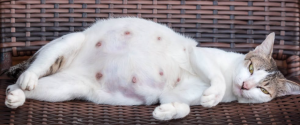Expecting newborn kittens is an exciting time! As your cat’s delivery day approaches, you may notice and feel the kittens moving around inside her belly. This sparks the question – do kittens move a lot before birth?
Understanding kitten activity and movement in the womb is important for monitoring mom’s pregnancy health and preparing for the big day. This comprehensive guide will walk you through what to expect, look out for, tips for care, and more.
An Overview of Kittens’ Movement in Late Pregnancy
In the final week or two before delivery, most kittens are quite active in the womb. They change positions frequently and you may see and feel small lumps, kicks, and wiggles on your cat’s belly as the kittens squirm around. This increased motion lets you know the kittens are strong, healthy, and getting ready for birth.
According to veterinarians, it’s normal for kittens to move around every 5-20 minutes on average. Bouts of activity last about 2-10 minutes as litters of 3-5 kittens switch places and get into birthing position. Movement decreases briefly right before delivery as kittens settle into the birth canal.
So in general – yes, you can expect a busy womb with lots of shifting, stretching, and rolling in the days and hours leading up to labor. Stay tuned for more details on monitoring fetal movement and what to look out for.
What Does Normal Kitten Movement Look and Feel Like?
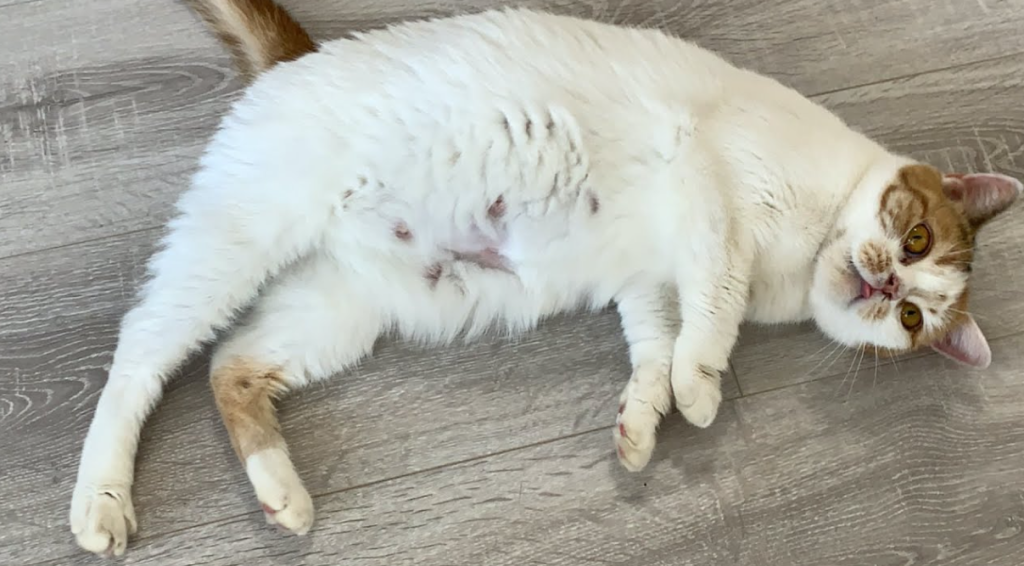
As your cat’s belly enlarges in the final week of pregnancy, you will be able to see and feel kitten activity. Here are some examples of normal pre-birth motion:
- Rippling skin or “wave-like” movements across your cat’s belly as kittens reposition themselves
- Visible small bulges that change location as kittens squirm and kick
- Rolling, swishing sensations when you gently press on the abdomen as kittens turn and tumble
- Light tapping or thumps that you can feel (and sometimes see) as kittens stretch their legs or bat each other
- 10-30 seconds of constant wiggling in one spot as a kitten gets comfortable
- A few large shifts as litters change position for birthing
These movements may be very obvious or more subtle, but you should notice multiple episodes of activity every few hours. Kittens enjoy maximizing space in the womb before it becomes cramped right before labor. If you are ever concerned that movement feels too exaggerated or weak, contact your veterinarian.
Monitoring Frequency of Motion and Other Signs
In addition to looking for healthy types of motion, keep an eye on the frequency as well. Here are some general guidelines:
- Expect 2-10 minute bursts of motion every 5-20 minutes on average.
- The motion should increase notably in the last 1-2 weeks before delivery.
- Sudden decreases in activity lasting more than 4 hours could indicate a problem.
Along with monitoring movement, watch for other physical and behavioral changes like:
- Nipples enlarging and pinkening
- Discharge from the vulva
- Decreased appetite and interest in food
- Seeking quiet, private spaces to nest
- Enlarged, loose feeling abdomen
- Occasional contractions or rippling along the abdomen
- Increased affection, purring, and kneading behaviors
If you notice any concerning signs like abnormal discharge, vomiting, lethargy, weakness, pain, or lack of fetal motion, make an appointment with your veterinarian right away. It’s much better to be safe than sorry when it comes to your cat’s health and her kittens’ well-being.
When Do Kittens Start Moving in the Womb?
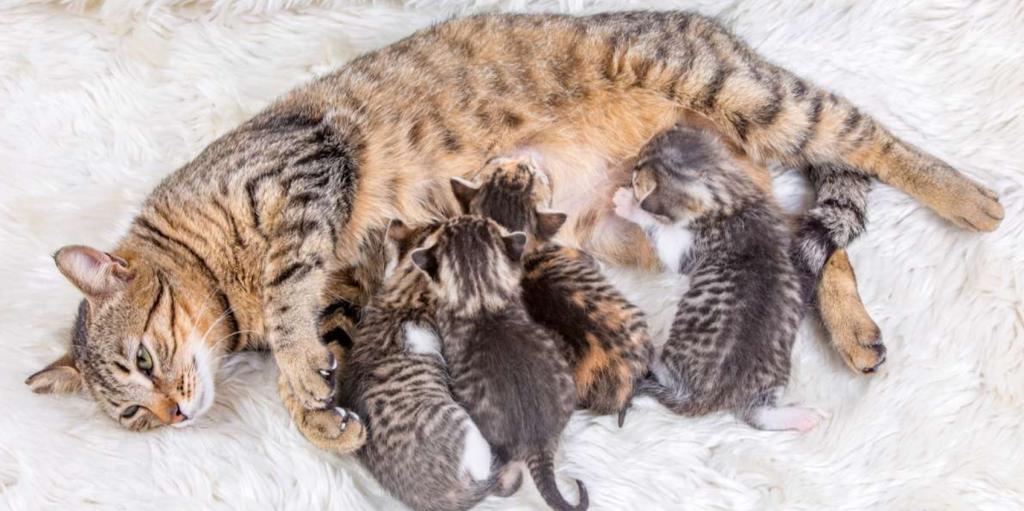
Kittens don’t start exhibiting significant movement until the final trimester in the last 2-3 weeks of pregnancy. Here’s a breakdown of fetal motion during cat gestation:
- Weeks 1-3: No detectable motion. Embryos are implanting and too small to cause any sensations.
- Weeks 4-5: Minor motion possible but not common. A large litter size may show some subtle signs.
- Weeks 6-7: Sporadic fluttering, twitching, or light thumps may be visible. These quick movements last 5-15 seconds.
- Weeks 8-9: More frequent short bursts of motion expected. You may feel small bulges and taps.
- Final week: Peak activity reached. Constant wiggling, kicking, rolling, and shifting for 2-10 minutes sporadically.
As you can see, kitten activity distinctly ramps up in the last week before delivery as they jostle for position. If you aren’t noticing movement in the final days, consult your vet for an exam right away.
What Does It Mean If a Kitten is Moving Less Than Normal?
While kittens are normally quite active in the womb leading up to birth, every pregnancy is different. Sometimes a kitten may move less due to:
- A smaller than average litter size. The womb has more space.
- Positioned away from the abdominal wall. Motion is muffled.
- A calm, relaxed temperament. Some kittens move less.
- Brief resting periods. Activity comes in waves.
However, if you notice prolonged decreased activity or complete lack of motion over a 4+ hour period, this requires veterinary attention. It can indicate:
- Low amniotic fluid levels
- Birth defects or developmental issues
- Sickness, infection, or distress
- Poor oxygen/blood flow
- Premature separation from the placenta
- Impending miscarriage or stillbirth
Any unexplained changes in normal activity levels should not be ignored. Alert your veterinarian promptly so they can examine, monitor, and treat any underlying issues. Don’t wait longer than 24 hours to be safe.
Is It Normal for a Kitten’s Activity Level to Fluctuate?
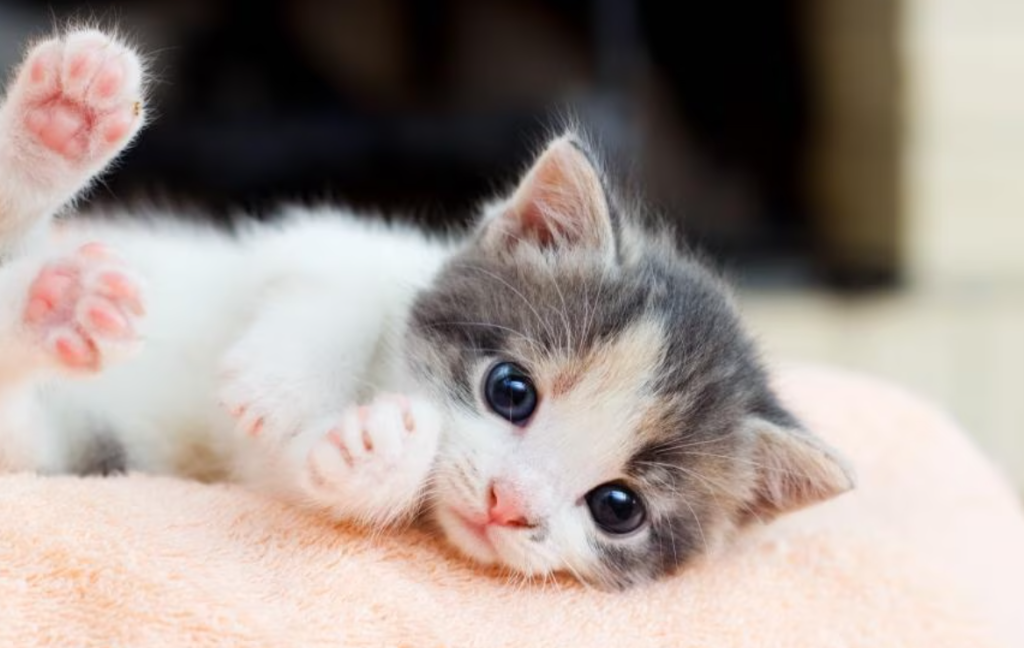
While kittens remain quite active and mobile in the final week before delivery, it is normal to observe some fluctuations and variations in the strength and frequency of motion from day to day.
Some reasons you may notice increased or decreased motion:
- Growth spurts – More pronounced movement with newfound room.
- Cramped space – Less mobility as the womb fills out.
- Sibling play – Vigorous wresting or cuddling with litter mates.
- Sleep cycles – Kittens alternate between active and resting states.
- Positioning – Motion seems exaggerated or muted depending on location.
- Individual temperament – Some kittens are naturally more or less active.
Try not to worry about minor inconsistencies. However, contact your vet if you see:
- Prolonged decrease in strength or frequency > 4 hours
- Complete lack of motion for 2+ hours
- Any other worrying symptoms like vomiting, pain, abnormal discharge
Otherwise, enjoy the incredible experience of bonding with kittens before they are born!
Tips for Monitoring Fetal Movement Week-by-Week
Here are some tips to follow at different stages of your cat’s pregnancy to stay informed about kitten activity:
Weeks 4-6
- Familiarize yourself with normal cat pregnancy symptoms like appetite changes, nipple enlargement, and nesting behaviors.
- Palpate the abdomen gently to feel for slight motion. Do this minimally to avoid stress.
- Note any discernible jolts, twitches, or bulges even if infrequent.
Weeks 7-8
- Start tracking fetal movement patterns and record episodes of activity in a journal.
- Gently press along the abdomen to better detect motion.
- Time how long bursts last and how often they occur to establish a baseline.
Final weeks:
- Closely monitor strength and frequency of motion during times when kittens are normally active.
- Watch for any type of decrease in normal movement lasting over 4 hours.
- Continue tracking patterns and immediately report any major changes.
Staying observant as your due date approaches is key for healthy kittens and a smooth delivery! Reach out to your vet with any concerns.
What if My Cat’s Kittens Have Stopped Moving Entirely?
It can be very worrying if you realize your cat’s kittens are no longer exhibiting any motion or activity. Possible reasons include:
- Impending labor – Motion decreases in the 12-24 hours before birth as kittens move into position in the birth canal. Lack of movement right before delivery is normal.
- uterine Inertia – Labor stops progressing during delivery. Requires prompt medical intervention.
- Fetal distress – Lack of oxygen or blood flow to the kittens. An emergency cesarean may be needed.
- Placental abruption – The placenta separates prematurely from the uterus, cutting off fetal support.
- Stillbirth – One or more fetuses have died in the womb, impacting movement.
- Miscarriage – Spontaneous loss of the kittens prior to birth.
If you suspect any issues based on absent movement, get your cat to the vet immediately. Time is of the essence for saving the kittens and resolving complications safely. Closely monitor for any signs of labor or vaginal discharge as well.
With prompt veterinary care, hypoxic kittens can often be resuscitated and stillborn kittens delivered to avoid life-threatening uterine infection. Don’t wait – call your vet right away if the motion stops.
At What Point Should You Take a Pregnant Cat to the Vet?
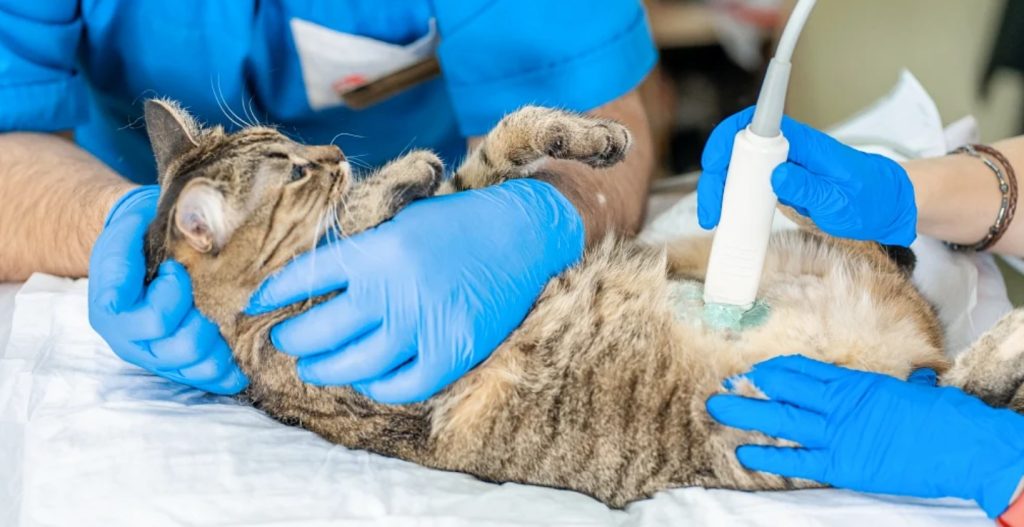
Here are some general guidelines on when to seek veterinary care based on concerns with kitten activity levels or other signs:
- Anytime you notice a prolonged decrease in normal fetal motion or movement patterns
- If you detect no motion at all for more than 2 hours when kittens are normally active
- If a kitten is repeatedly moving much less than litter mates
- If you see signs of impending labor like discharge, nesting, loss of appetite within 24 hours but no motion
- For any symptoms of illness like lethargy, vomiting, diarrhea, loss of appetite
- For abnormal vaginal discharge – foul smelling, green, or bloody
- If your cat seems in pain or distress when palpating her belly
- If you have any concerns about decreased motion or viability
Your vet can conduct ultrasounds, heart rate checks, x-rays and other tests to evaluate fetal health, development, and wellbeing during pregnancy. Don’t delay seeking help – your cat’s health and her kittens’ lives may rely on it.
What Should You Do if Your Pregnant Cat is Acting Weird?
Pregnant cats can begin exhibiting some odd behaviors that signal changes leading up to delivery. Here are some tips on deciphering normal vs concerning symptoms:
Normal
- Increased affection and clinginess
- More frequent purring and kneading
- Seeking quiet, secluded places to nest
- Moderate decrease in appetite
- Slightly muted fetal movement 24-48 hours pre-labor
Concerning
- Hiding and anti-social behavior
- Extreme lethargy or restlessness
- Crying out or signs of pain
- Foul/abnormal vaginal discharge
- Sudden disappearance of fetal movement
- Severe vomiting, diarrhea, weakness
- Straining or signs of early labor > 1 week before due date
If you notice any of the above worrying symptoms, call your vet without delay. They can examine your cat, pinpoint any problems, and provide appropriate treatment to keep mom and kittens safe. Don’t wait – weird signs could indicate impending complications.
How Can You Tell if Your Cat is Having Contractions Before Labor?
In the final day before labor begins, you may be able to see and feel contractions rippling across your cat’s pregnant belly. Here’s what to look for:
- Rippling along abdomen in waves, like a rolling motion under the skin
- Noticeable tightening of the belly, lasting 15-60 seconds
- Hollowing beside the spine as abdominal muscles contract
- Stiffening of the abdomen, may feel firm to the touch
- Panting, vocalizing, or other signs of discomfort
- Enlarged, loose abdomen tightens during contractions
- Discharge may pass from the vulva as cervix dilates
- Contractions generally last 15-60 seconds and occur 5-30 minutes apart
- Queen becomes restless, seeks seclusion, loses appetite as labor nears
If you suspect contractions have begun, monitor closely for progression, pacing, and proper positioning for birthing. Have supplies on hand and call your vet if you have any concerns.
How Can You Calm Down a Pregnant Cat that Seems Stressed?
A stressed, anxious cat in late pregnancy may excessively groom, hide, or act restless. Here are some tips to help calm her down:
- Keep noise and activity in her space minimal. provide a quiet, private nesting area.
- Use synthetic feline pheromones like Feliway to encourage feelings of security.
- Maintain comforting routines for feeding, play, and social interaction.
- Gently stroke her back and sides, avoiding the abdomen.
- Distract her with interactive toys when she seems agitated.
- Speak softly and reassuringly when interacting with her.
- Make sure she has easy access to food, water, litter box and comfort items.
- Give her breaks from children or other pets overwhelming her.
- Consider calming supplements or treats under your vet’s direction.
- Have a vet exam to rule out any medical cause if behavior is concerning.
With a little TLC and preparation, you can get your expectant kitty feeling cool as a cat before her big day!
What Should I Have Ready Before My Cat Gives Birth?
Preparing a “birthing kit” and space can help set your cat up for a smooth delivery. Have the following supplies ready:
- Whelping box/nest – lined with towels in a quiet, dim area
- Extra bedding – for absorbing fluid and keeping kittens warm
- Heating pad – on low, covered with towels for supplemental warmth
- Kitten formula & bottles – in case supplemental feeding is needed
- Clean towels – for drying/stimulating newborns
- Bulb syringe – for suctioning mucus if needed
- Scissors & clamps – to cut and tie off umbilical cords
- Gauze – to gently clean kittens if needed
- Scale – to monitor kitten weight and growth
- Vet’s number – saved in your contacts and readily available
Providing an optimal environment and having supplies nearby will help put both you and your cat at ease on delivery day. Stay observant as her due date approaches!
Frequently Asked Questions About Kittens Moving Before Birth
Here are answers to some commonly asked questions about fetal movement:
How often should kittens move before birth?
- Normal movement occurs in spurts lasting 2-10 minutes every 5-20 minutes on average. Motion increases notably in the final week before delivery.
What does it mean if kittens aren’t moving much?
- Some decrease right before birth is normal, but prolonged lethargy or cessation of movement can indicate fetal distress requiring veterinary help.
Is it normal for one kitten to move less than the others?
- Minor natural variations in activity levels are fine. However, contact your vet promptly if one fetus shows significantly decreased motion.
How late in pregnancy can kittens start moving?
- Detectable motion usually begins around 6-7 weeks’ gestation, with the most pronounced movement seen in the last 1-2 weeks before birth.
Do kittens move around right before labor?
- Fetal motion decreases 12-24 hours prior as kittens settle into the birthing position. Lack of movement during active labor is normal.
Staying tuned into your kittens’ activity before birth helps set them up for a healthy start to life! Reach out to your vet with any concerns.
Key Takeaways
- Expect increased fetal motion in the final week before delivery, lasting 2-10 minutes every 5-20 minutes on average.
- Normal activity includes rolling, kicking, and visible ripples or bulges across the abdomen as kittens squirm into place.
- Contact your vet promptly for any prolonged decrease in movement or lack of motion lasting more than 4 hours.
- Some fluctuations in kitten activity are normal, but notify your veterinarian of any concerning changes.
- Prepare a birthing area with supplies like towels, heating pads, formula, and your vet’s number before delivery day.
- Stay observant of fetal motion patterns and your cat’s symptoms as you get closer to birth.
Monitoring kitten activity, preparing effectively, and acting quickly when concerns arise will set you up for the best outcome. Wishing you and your expectant kitty the very best!

